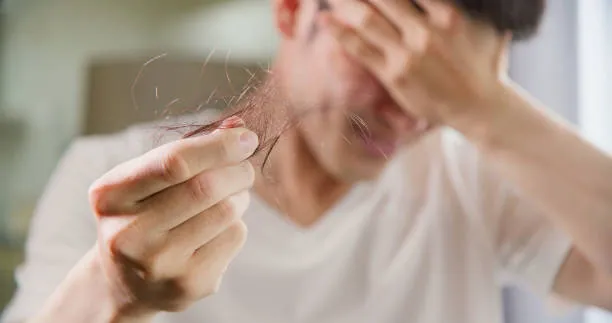The problem of hair loss concerns many people, consulting equally men and women of different ages. However, shedding even a few hairs every day is typically expected. Thus, if the problem appears to be more severe, one may be concerned and start facing self-esteem issues. This guide focuses on the various types of hair loss, their potential causes, side effects, and the various treatment options available to clarify and help you cope with this issue.
What is Hair Loss?
People often use the term hair loss, medically called alopecia, to describe the process of it (from the scalp) that occurs suddenly or slowly. It can manifest in various ways, from a fall of hair to complete baldness. They can be a temporary phenomenon or chronic, and there may be a difference in the intensity of it in different individuals.
Types of Hair Loss:
Hair loss can be classified into different types, each having its peculiar manifestation in other symptoms and unique causes. Knowing the specific details is essential in determining the treatment that best fits the patient.
- Androgenetic Alopecia
- Telogen Effluvium
- Alopecia Areata
- Traction Alopecia
- Trichotillomania
1. Androgenetic Alopecia
Hair loss, a common condition among both adult men and women, is called by doctors androgenetic alopecia, which is an instance of pattern baldness.
Causes:
Genes are considerable determining factors of this male pattern baldness in which androgen hormones like dihydrotestosterone (DHT) take effect on the shrinking of follicles, leading to miniaturized and shorter hair.
Side Effects:
Aren’t the physical symptoms the only ones? However, those with Androgenetic Alopecia can experience emotional distress and low self-confidence from changes in the way they look as well.
Treatment:
Hair loss in the male type is treated with minoxidil from over-the-counter applications, prescription medications, and laser therapy. A hair transplant is the last option in it.
2. Telogen Effluvium
Telogen effluvium manifests with more hairs than usual, causing increased hair loss. This happens when a high proportion of hair follicles are early to the hair rest (telogen) cycle.
Causes:
Multiple causes or triggers, including internal (emotional or physical stress, hormonal regulation disturbances such as childbirth or thyroid problems) and external (nutritional deficiencies, medications, or other medical problems), can start the telogen effluvium.
Side Effects:
Besides the fact that the visible thinning of hair can be linked to such concern, individuals with this syndrome may also suffer from emotional isolation, stress, and anxiety due to appearance concerns.
Treatment:
The more we affect the trigger, the easier it will be to treat the telogen effluvium. Treatment can also include stress management, dietary alterations, supplements, and any other ailments.
3. Alopecia Areata
Autoimmune alopecia areata is a form of the disease that results in the existing and breaking out hair loss in the scalp. Other areas of the body that have hair are also affected.
Causes:
The improper functioning of the immune system causes immune cells to be mistakenly recognized as foreign cells, and hair follicles are targeted, too, causing them to die.
Side Effects:
The emotionally disappointed, as well as those who suffer from anxiety or social segregation, can be attributed to bald patches that are found visible on the head.
Treatment:
Treatment choices involve corticosteroid injections, topical immunotherapy, and medications to decrease the immune response. Nevertheless, the results will differ, and the time for complete regrowth is not deterministic.
4. Traction Alopecia
Traction alopecia is a condition arising from the consistent and persistent engagement of hair roots with tight braids, ponytails, or hair extensions.
Causes:
As mechanical wear damages hair follicles, inflammation continues until roots are lost.
Side Effects:
In addition to hair loss, individuals with traction alopecia may experience scalp tenderness or itching and soreness.
Treatment:
Prevention of regrowth of the hair in traction alopecia is essential by dealing with the root cause of the problem. Tighter hairstyles and excess stress on it shaft can lead to hair loss that can be prevented by having more relaxed hairstyles and hairstyles distributed evenly across the scalp. If mild, topical remedies or corticosteroid injections may be prescribed. If inflammation is severe, you may need topical treatments or corticosteroid injections.
5. Trichotillomania
Trichotillomania is a mental illness characterized by a desire to pull out hair continuously; thus, those pulls would subsequently become hairless and have patches.
Causes:
It is believed that trichotillomania might be linked to stressful or anxious conditions as well as other mental health problems that might be underlying. It is also a way of mitigating negative emotional responses or processing trauma.
Side Effects:
Apart from the direct physical consequences of trichotillomania, individuals with this disorder may feel very shy, guilty, or embarrassed, and this would even aggravate the condition.
Treatment:
Therapy, ideally CBT, is the prime treatment option for trichotillomania. Provided is the road to dealing with stressful situations and the arrival of the habitual thoughts that trigger the hair-pulling.
Conclusion
The thinning of hair can also cause various physical changes in the person, like appearance and sense of self, to be more debilitated. The different categories of hair loss, the trigger factors behind them, and the possible side effects of their remedies are also imperative facts that individuals should note during their decision-making process regarding the right treatment and the proper healthcare by a professional. Remember that early intervention and taking measures as directions are the best ways to deal with hair loss successfully and acquire the necessary hair health.
Read more…
Bodybuilding and Steroids
Anabolic Steroids for Sexual Aid
Acne: Types, Causes, Benefits, and Side Effects
Low Testosterone (Low T) and Its Impact on Health
Oral Anabolic Steroids: Types, Uses, Benefits, and Side Effects
